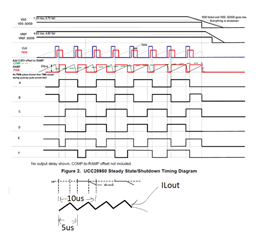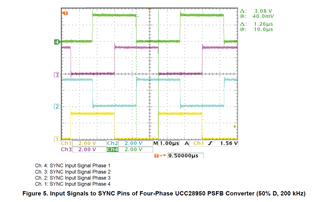Other Parts Discussed in Thread: UCC28050,
Hi to all,
In application report SLUA609 a sync generator circuit example is showed. The goal is to have four different SYNC signals at 200 KHz each.
But looking at Figure 10:

Each SYNC signal (VF2 to VF4) has a frequency of 100 KHz (10 us period), so, in my opinion, each of the four UCC28950s will run at 50 KHz.
But the application report say that these curves are equivalent to Figure 5 ones, which are 200 KHz each.
What does I am missing?
Thanks.








